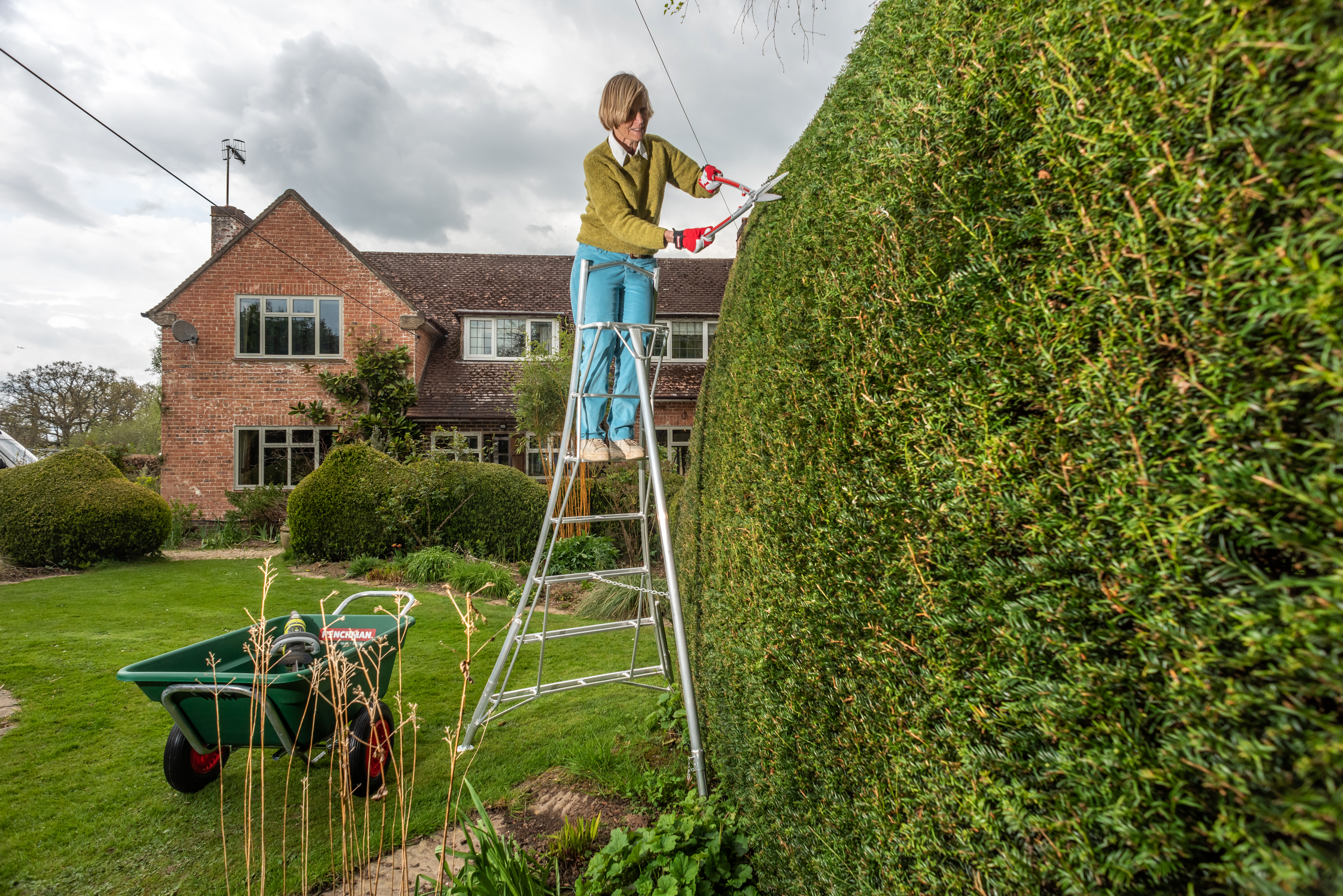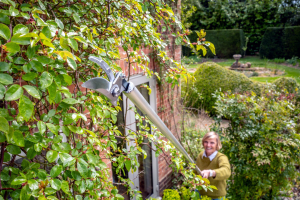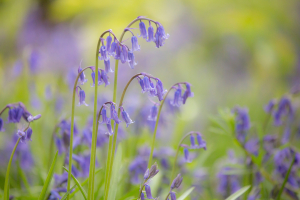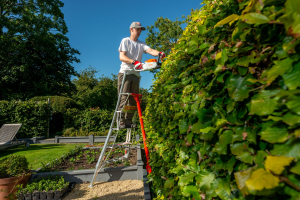The benefits of using hedges as fences

Maybe you’re looking for a new way to enclose your garden, or maybe you just fancy a change. Either way, if you’re reading this blog then there’s a chance you’re wondering whether you should use a hedge instead of a fence as your garden border.
Hedges as fences can bring so many benefits to your garden, more than just aesthetics. Keep reading to see why hedges can make fantastic fences for your garden.
Using a hedge instead of a fence is good for the environment
Hedges are home to many species of wildlife, such as bees, butterflies, hedgehogs and more. They offer a haven for them, particularly in more urban areas. They provide shelter for nests and are an excellent food resource for different wildlife.
We asked an expert from Plan for Ecology why hedges are so important for this ecosystem:
“Hedges in urban or built-up residential areas enhance connectivity, providing a corridor to the wider landscape which wildlife benefit from. Native hedges (c. 20m+ in length) often qualify as a UK BAP priority habitat and as a habitat of principal importance (Hedgerow, Section 41 NERC Act, 2006). Hedges can offer botanical and structural diversity which benefits a whole host of UK wildlife in the form of: shelter, providing foraging opportunities for faunal protected species such as; dormouse, nesting birds, invertebrate species, reptile species, badgers, hedgehogs and bat species.
"Bats use un-lit hedges as flightpaths by way of navigating when they are foraging and socialising. Hedges provide food for invertebrate species which in turn provides food for the much-loved UK mammals and birds. Hedges are a really useful feature in linking habitats together to create a mosaic through which wildlife can travel. Hedges for wildlife could be seen as an equivalent of motorways to us.” - Chloe Balmer MSci (Hons) Ecological Consultant for Plan for Ecology Ltd
Plan for Ecology provides ecological surveys throughout the southwest, including habitat and species assessments where the team understand and advise on the importance of hedgerows in todays planning landscape.
But the environmental benefits of hedges are not limited to wildlife. Another reason why hedges are a great alternative to garden fences is that they improve the air quality. Like most other plants, they help remove air pollution in the atmosphere, reducing carbon by up to 63%! This is particularly beneficial when using hedges in gardens located next to busy roads, helping to combat pollution in the local area. It’s no wonder why the RHS has called for homeowners to swap their fences with hedges!
Using bushes for privacy
When adding a border for privacy, people usually jump straight to fences. But here at Henchman, we think that hedges work just as well. While you do have to wait for the plant to grow, there are many fast growing shrubs that can make beautiful barriers for your garden.
Fast growing shrubs for privacy
There are many plants you can choose from to keep your garden enclosed:
- Pyracantha - a great one if you’re growing a hedge for security, as this is a thorny shrub that’s also quite dense, ideal for a barrier.
- Common Elder - this plant has fragrant flowers and elderberries for you to snack on (when cooked!)
- Eucalyptus - a popular shrub that can fill space quickly.
- Mock Orange - expect fast growth, dense, dark leaves and white flowers during the summer.
Choosing any of the above plants will grow into stunning hedges that work well as garden borders.
Fast Growing Evergreen Shrubs
Evergreen shrubs are also popular plants for fast-growing hedges:
- Photinia Red Robin - if you want a bright, colourful hedge, then this is the shrub for you.
- Escallonia - this evergreen shrub has white, pink or red flowers during summer months.
- Mexican Orange Blossom - perfect for hedges, this plant has dark green leaves and star-shaped flowers.
- Portuguese Laurel - a dark evergreen shrub with pointed, glossy leaves.
Each plant has its own look and scent, meaning that you have plenty of choice when it comes to fast growing privacy hedges.
Hedge vs fences - cost implications
For half the cost of the fence, you can plant a new hedge in your garden. There’s no need to worry about replacement costs later down the line, as your shrubs will only continue to flourish as long as they are well looked after (we’ll get on to this later). Fences can be wrecked by the elements and can just generally look worn down if they’ve been there for a long time - usually around 15-20 years.
HortWeek has highlighted hedges as a trend for 2023 with price being a factor: “Form Plants managing director Jamie Butterworth says all the gardens he supplied at the RHS Chelsea Flower Show this year want hedges rather than walls or fences — hedging is cheaper and greener. Richard Miers' Perennial garden had no structures at all in it.”
While fences can seem inexpensive, but when you think about how much it would cost to lay a fence all the way around a garden, the prices can add up. Hedge laying costs can be cheaper, especially when doing it yourself. The cheapest way of laying a hedge is by planting a bare-root hedge during peak season (November - February). Gardeners World share their tips on planting bare root hedges here.
Using a hedge as a fence means a better windbreaker
If you live in a particularly windy area, then hedges create effective windbreaks for your garden. A windbreak hedge simply slows and disperses wind throughout your garden, reducing moisture loss for plants and improving growth.
Hedges are a more effective windbreaker as they only allow some wind to pass through. Wooden fences, on the other hand, are more likely to be battered by strong gusts of wind.
The best hedges for windbreak
If you choose a hedge for windbreak reasons, then try planting:
- Leylandii - a fast growing hedge that’s highly resistant to pests.
- Monterey Cypress - a golden, scented conifer that grows upright.
- Golden Privet - this is a bright-leaved plant that grows white flowers during summer.
- Thuja Brabant - a bushy plant that’s highly tolerant to strong gusts of wind.
- Western Red Cedar - a bright green, fragrant plant.
- Thuja Smaragd - this is a neater shrub that’s very low maintenance.
Maintaining hedges as fences
Many assume hedges take a lot of work but, most of the time, hedges are pretty low maintenance. While new hedges may need more trimming early on, once they’re established, you only need to trim once or twice a year at most. As we mentioned earlier, fences often need a refresh - or even a replacement - after a while. You’ll only need to give your hedge the occasional prune for the rest of its life.
As your hedge grows taller, you’ll need the proper equipment to maintain your hedge in a safe and sturdy way. You’ll need a high quality hedge trimmer on hand, but you’ll also need safety equipment, too. At Henchman, we stock all you need to do a tidy job:
- Garden platform ladders, such as our trusty tripod range and Hi-Step platform, which we designed specifically to keep you safe on uneven terrain.
- Gardening gloves
- Secateurs or sheers to keep the hedge trim and tidy
Investing in the right tools can help your hedge grow into an attractive alternative to a garden fence, one that you’ll reap benefits from for years to come.
To find out more about safe trimming techniques, best trimming times and what to be aware of, read our hedge trimming guide for all the information you need.
Still unsure? Try a fence and hedge combination!
Many choose to use both fences & hedges, so if you really can’t decide, why not go with both?
Growing a hedge against a fence combines the benefits of both hedges and fences. You have the instant security of a fence, but with better privacy and more environmental benefits, thanks to the hedge. This also works for people who think of hedges as too plain - with the fence, you can transform your border into the look that you want.
When planting a fence with a hedge, make sure to leave enough space between them so you can properly trim and maintain the hedge.
Maintain your garden hedge with Henchman
Henchman has all the tools you need to keep your established hedge happy and healthy. From garden ladders, gloves and trimming shears, maintaining your hedge is a simple task for gardeners and DIY’ers alike.
Explore our range of ladders and platforms here, or get in touch to find out more about our products.



